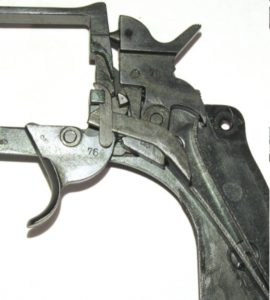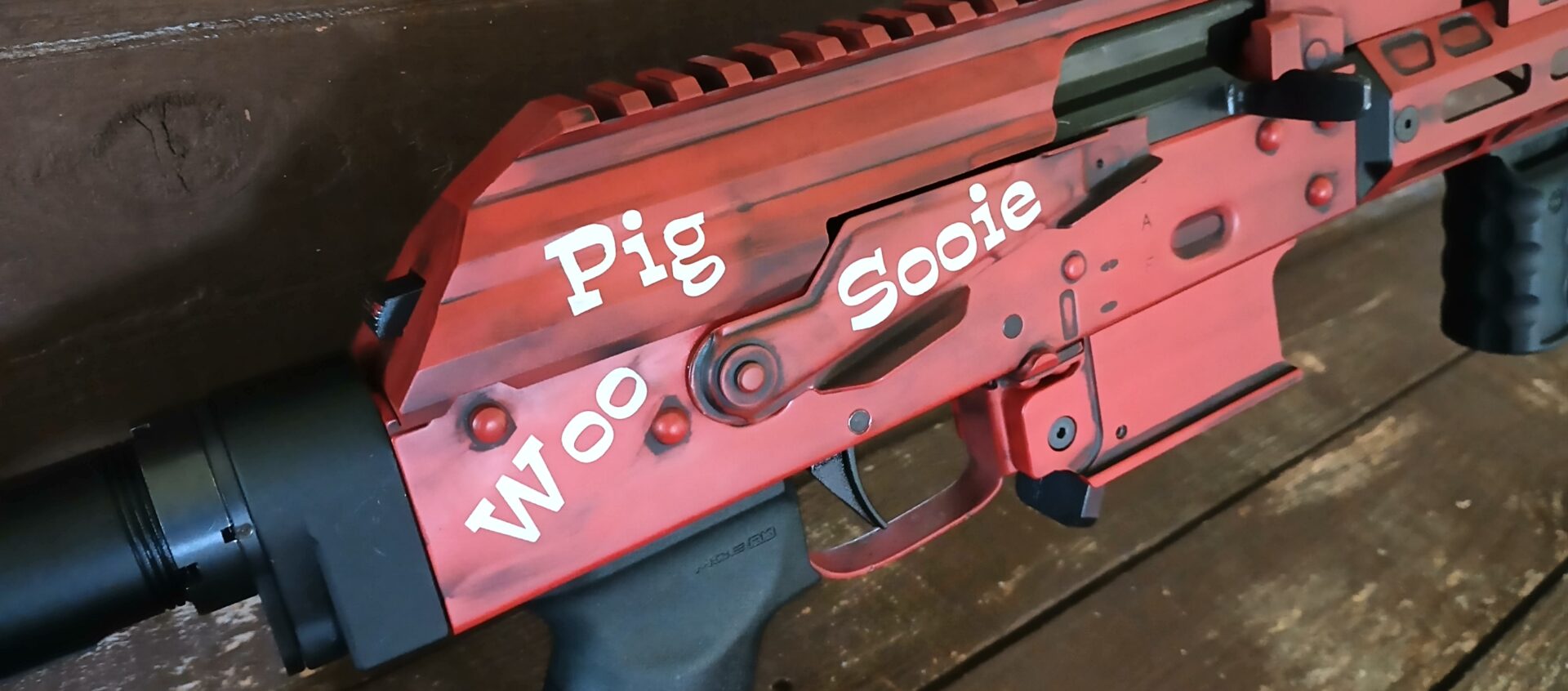What is a Trigger Job and How Does it Help My Pistol?
When asking what is a trigger job, it isn’t just about making the trigger lighter. It can also make it easier to follow up shots, avoid jerking, and make groups narrower. Obviously, it won’t make you a great shooter, but it can help you control the trigger. Read on to learn how it works and why it’s worth considering. Here are the benefits and advantages of a trigger job.
What is a Trigger Job – Looking at Trigger break
If you’re unfamiliar with the term “trigger break,” it is a reference to the point when the hammer and striker release from the sear. When firing a loaded firearm, you will hear a “bang” or “click” and feel a small vibration. The trigger will then release the stored energy in the striker and hammer, firing the pistol. Many shooters prefer a “clean” break, in which the trigger snaps under finger pressure. Otherwise known as “mushy” or “cracked,” this is an undesirable condition, as it limits your control and accuracy.
firing a loaded firearm, you will hear a “bang” or “click” and feel a small vibration. The trigger will then release the stored energy in the striker and hammer, firing the pistol. Many shooters prefer a “clean” break, in which the trigger snaps under finger pressure. Otherwise known as “mushy” or “cracked,” this is an undesirable condition, as it limits your control and accuracy.
In addition to avoiding shot anticipation, a good trigger helps shooters hit targets in a consistent manner. A smooth, short take-up trigger helps shooters get the most out of their shots. Shooters should avoid jerking the trigger or using the surprise break method. The best way to avoid the former is to shoot slower, and then let the trigger “snap” as the target draws nearer.
Trigger break, also known as the release, must be sharp and crisp. Any excessive mush will limit the accuracy potential of a pistol. The greater the mush, the more mushiness there is in the gun. Overtravel, or “backlash,” is another problem. A CZ 75 pistol has a modest amount of backlash, while a Kriss Sphinx CZ clone is appreciably lower.
Get Your Trigger Job Done By a Certified Gunsmith
Index to fire
In the practical realm, there are three different techniques for controlling the trigger. Index to fire, firing from the trigger wall, and inflight resetting under recoil. All of these techniques will shorten the prep time for follow-on shots and improve accuracy. Here’s a look at how each technique can be used. The most important aspect to remember is that each technique will require practice to become perfect.
While index to fire is not the most accurate way to manipulate a gun’s trigger, it is effective in split-second situations. The shot will probably hit the target inside an acceptable area. Another way to manipulate the trigger is to “fire from the wall” or place your finger alongside the trigger frame. The goal is to eliminate pre-travel of the trigger. This technique has been found to be useful in unholstered weapons.
Pre-travel
In a 1911, the Pre-travel trigger job is necessary to ensure that the trigger reaches the half-cock notch and a trip occurs before the slide begins to fall forward. However, some 1911s are designed with too little pre-travel, making this a necessary adjustment. If you are unsure of whether your pistol trigger has enough pre-travel, you should try racking the slide and releasing the trigger while it is at half-cock.
The trigger of a pistol can have many problems, ranging from over-traveling to the failure to fire at all. Insufficient trigger adjustment is most common on Ruger pistols. Incorrectly tightening the pre-travel screw will create too much tension in the trigger system. Leaving too much slack can cause the trigger to “break” prematurely and lead to a dead trigger. Incorrect adjustment can also cause the trigger connector bar to angle upwards and rub against the bolt.
There are a few different terms for these handgun trigger movements. Some are only applicable to certain kinds of actions. Regardless of their name, they all refer to the same action: resetting the trigger. This trigger movement process is also called Trigger Take-Up or Trigger Slack. Trigger Take-Up does not engage the mainspring or move the sear. It is the first movement of the trigger from its resting position.
Trigger slack
Trigger slack is a term that describes two characteristics of a single-stage trigger: its lack of pull resistance and the degree to which it slacks. During the initial press of the trigger, the slack is usually light, but as it is pulled, it becomes more firm, indicating that the firing pin has hit the primer on the back of the ammunition.
Trigger slack is measured in 1/8-inch increments. The amount of slack in a pistol’s trigger is often misinterpreted. In reality, most people discount take-up and pre-travel. In pistols, this loose motion is often referred to as creep, which is not as detrimental as it is in a rifle. Shooters who are not concerned with trigger creep prefer a clean break, where the glass rod snaps under the finger pressure. Shooters who don’t experience a clean break may have a “mushy trigger,” meaning that the trigger doesn’t fire properly.
In a two-stage pistol, the slack in the trigger is built in. When the shooter pulls the trigger, the slack is removed by increasing the pressure to break it. Two-stage triggers are useful in precision rifles, which need only a small amount of pressure to fire. But with a single-stage pistol, you need to maintain a proper trigger slack between the take-up and the break.
Trigger springs
Trigger springs play an important role in a pistol’s trigger pull and performance. They help control the power of the pistol’s action and help it eject the bullet more quickly. Each pound of recoil spring varies the ejection distance. A spring that is too heavy will result in a muzzle rise while a spring that is too light will cause the slide stop pin to be stressed. Different guns require different springs, so experimenting is the best way to find out what works best for your pistol. The OEM recoil spring for a full-size 9mm CZ pistol weighs 17 pounds, while the one found in compact metal framed CZ pistols uses 16 pounds. The CZ P07 and P09 use 20 pounds.
Trigger springs are essentially springs that push against the hammer when the trigger is pulled. When the trigger is pulled, the spring forces the hammer to come back to the muzzle. This process is crucial for a firearm’s function. While no two springs are the same, some common design elements are the same. This article will describe the most common types of springs found in firearms.
Trigger pull
When examining a firearm, the trigger pull can give an indication of how difficult it is to fire a gun. Trigger pull ranges vary for different types of firearms. However, in order to accurately test a gun, examiners should determine the cause of a variation in trigger pull that is out of the factory specifications. By determining the reason for the variation, examiners can identify the underlying problem.
The trigger pull of a handgun is almost as important as the sights and grip. In most cases, a pistol trigger can be adjusted to enhance feel and aid accuracy. In this article, we will take a look at the basics of trigger pulls and answer common questions about them. To begin with, let’s define trigger pull. A lighter trigger pull is more comfortable and increases accuracy. A trigger weight should be around four pounds.
Another important feature of a handgun trigger is that it allows many rounds to fire on a single pull. This is better than the cycling action that occurs when a firearm cycles through several rounds. Many firearms today offer second strike features. These features have been popularized by some manufacturers, such as the Taurus PT 24/7 Pro pistol. Another example of a pistol with second strike is the Walther P99 Anti-Stress.




